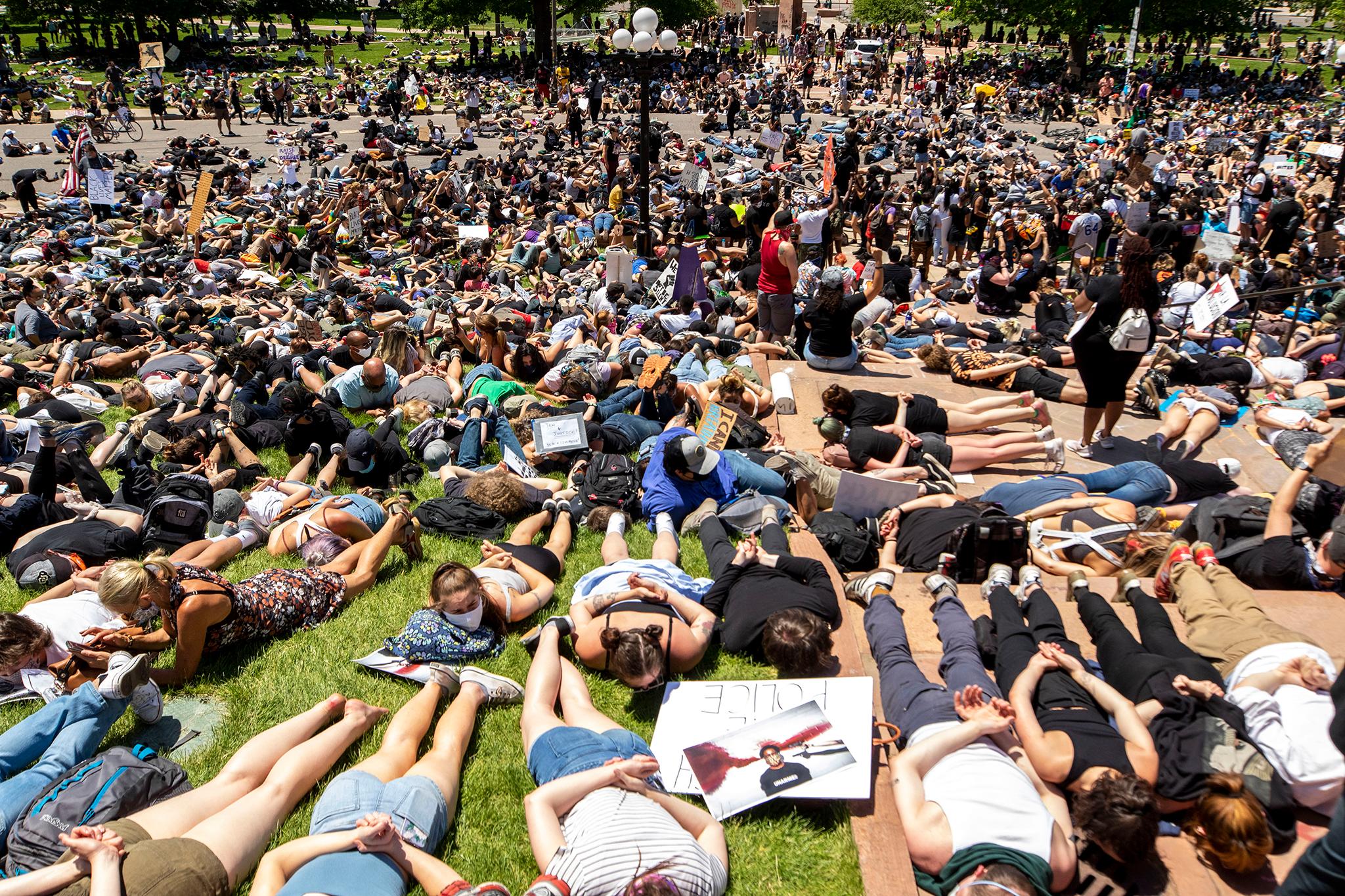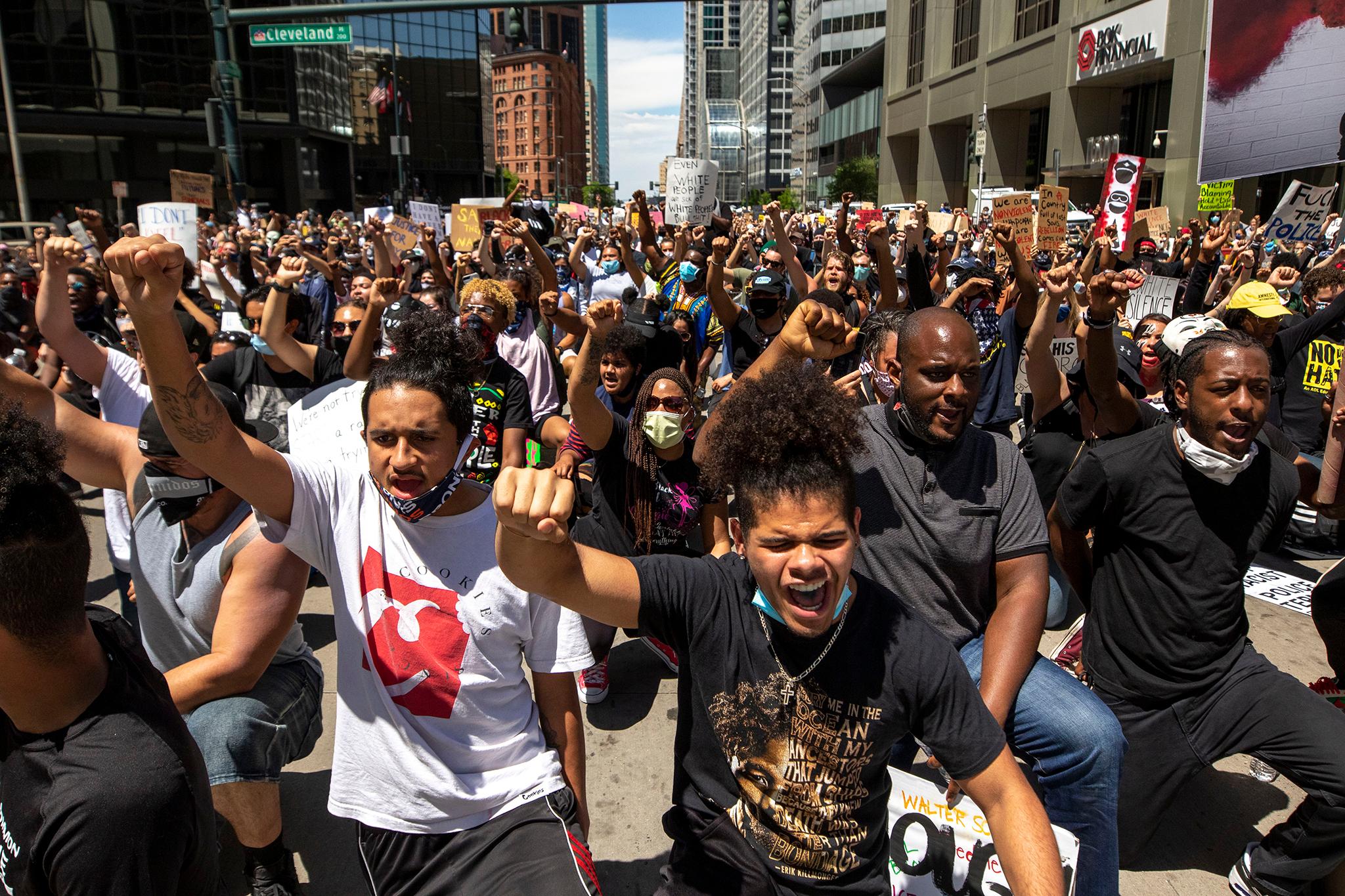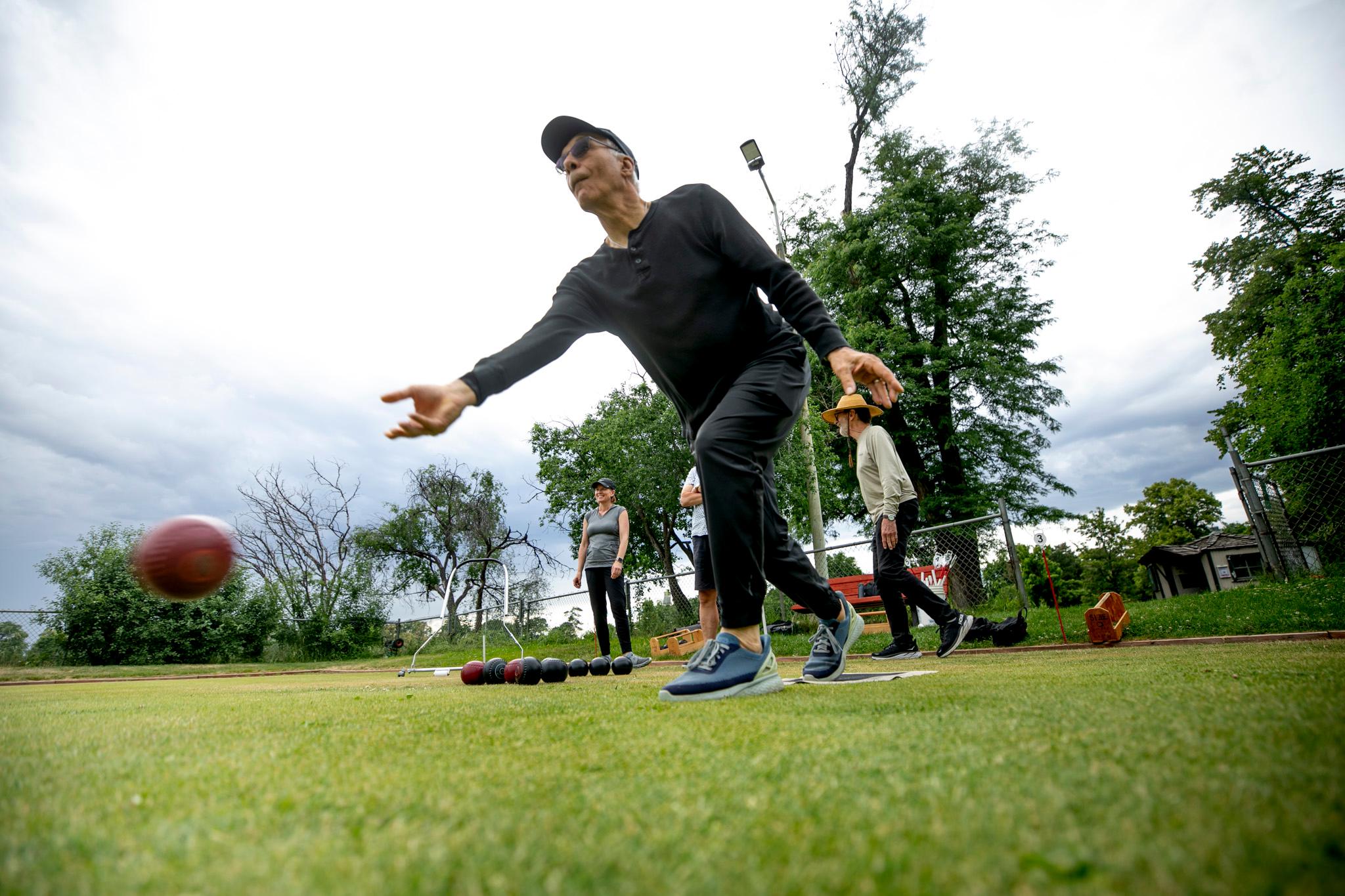Updated 10:45 p.m.
Protesters hit Denver streets again today to call out police brutality. The official gathering was scheduled for noon in front of the State Capitol.
Thousands turned out, ignited by the death of George Floyd, a Black man who died in police custody in Minneapolis. The officer who used his knee to subdue Floyd, who repeatedly said he couldn't breathe, has been arrested and charged with third-degree murder.
The Denver protests -- there have been two so far, on Thursday and Friday -- started peacefully. People gathered in front of the State Capitol, chanting things like Black lives matter and "I can't breathe." They marched through downtown, colliding with police in riot gear who have utilized pepper bullets and tear gas to subdue crowds. The police have said they have been hit with rocks and water bottles.


On Saturday, other police departments sent in officers to aid Denver police in enforcement. Around 100 Colorado National Guard members were also present at nine different sites in the city.
Natalia Marshall was at the rally Saturday afternoon when protesters staged a "die-in" while chanting "I can't breathe."
"I'm here to support George Floyd's family because my uncle died the same exact way he did, five years ago in Denver, Colorado," she said.
Michael Marshall died in 2015 after a psychotic episode in the Denver jail. Officers pinned him to the ground and covered his mouth with a spit hood, causing him to choke on his own vomit. The case was one of a handful that led to a new use-of-force policy for the Denver police department.

Natalia and her daughter Anaviance Essien attended Saturday's demonstration with a sign memorializing her uncle.
"I sincerely pray for their family, because I know it's difficult," Natalia said. "And they'll never forget it, and it'll forever affect them, just as it affected us as well."
Around 1:30 as they stood on the steps of the Capitol, Marshall and her daughter were given sunflowers by activists who knew their family.
Taran Watkins said he believes the pandemic, along with everything else, has pushed people to a breaking point.
"People were at home, and now they're at home and angry, so they're going to leave their home angry," Watkins said.
He carried a sign that said "I'm black, am I next?"
"In every city across this country, they're shooting at everybody now. So it's a breaking point, and people are not going to stop."
Watkins left the demonstration when he felt the situation escalating. On Friday, police officers used pepper bullets, tear gas and flash bangs to disperse crowds around the Capitol.


Denver Public School board member Tay Anderson led part of Friday's protest. He decried the violence among the protesters.
"This is not what we wanted," an exasperated Anderson told the crowd. "This is not what Black people wanted."
As night fell and the curfew approached, confrontations between the police and protesters escalated, particularly around the Capitol building. With less than an hour left until curfew, a large crowd of protesters remained on the Capitol lawn and elsewhere in the area.
Shortly before 8 p.m., police officers used a megaphone to tell protesters that they "would be subject to immediate arrest" if they were on the street. They deployed a large amount of tear gas and other chemicals to diffuse protesters. Although people did begin to leave as the deadline approached, around 2,000 people remained in the area shortly after curfew.
Following the curfew, officers began to move, pressing the crowd of protesters away from the Capitol building, using tear gas, pepper spray and pepper balls. Protesters reported the use of a device that produces an extremely loud sound to disperse people, although officials did not confirm that.
"Why am I staying out past eight? Because what does that rule even matter?" said Alexis Marks, a woman who identifies as half-Black and half-Irish. She was present at the protest following the curfew. "You can't kill people either. They don't follow the law so why should I follow the law?"

After police dispersed protesters from the Capitol area where the fiercest confrontations took place, people marched south, dispersing into neighborhoods. By 10 p.m., there were no mass gatherings, but instead pockets of unrest including several dumpster fires.
Alex Hickman, who lives in Capitol Hill, said he didn't see the late-night chaos as meaningful protest.
"They don't know why they're out here rioting. This isn't sticking up for black people and that's coming from a black man," he said. "I'm seeing people who've been locked inside for the last two months and need to get out."
A group of police officers rested at 14th and Clarkson, a few minutes after a woman had been taken away in a paddy wagon. Across the street, a young man played guitar, saying he hoped it soothed the heightened tensions.














